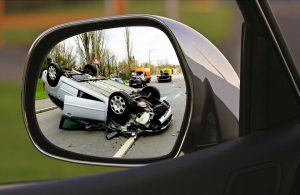
Social psychology convincingly tells us that we think and recall information using shortcuts known as heuristics. This way, information processing becomes efficient and highly practical. For example, lack of experience, incompetence, and risk-taking are the most commonly reported causes of accidents among young drivers. Age-related deficiencies such as mobility issues and perception inaccuracies are the most commonly used attributions for accidents that involve older drivers.
Such conclusions may seem logical, but they are in fact the result of a blind bias. In fact, Rolison, Regev, Moutari, and Feeney in 2018 uncovered that the commonly held beliefs about the inadequacies of younger and older drivers are pretty much reflected in official records of accident causes.
However, the authors of the study raise the possibility that the observed correspondence between expectations and official records might be more because of confirmatory bias than honest reporting of actual events.
According to general psychology, people who function with a confirmatory bias will most likely interpret an ambiguous situation in a way that goes well with their expectations. When applied to the immediate case, police officers might be more predisposed to think that an accident is caused by perceptual inadequacies if the driver is older or incompetence if the driver is young. The confirmatory bias becomes especially stronger when the actual reason of the mishap is not immediately clear.
The authors continue, pointing out the significance of other factors, especially those that are not necessarily tied with age such as: alcohol and drug use, dangerous driving, and driver distraction. All of these might be downplayed by reporters simply because they don’t go well with the narrative that they expect.
What can be done to minimize confirmatory bias?
There is no question that it’s important to accurately pinpoint the real causes of auto accidents. Having the right knowledge will help police officers and policy-makers formulate and implement the appropriate interventions. A car accident lawyer will also benefit. They will be better able to determine the legitimacy of claims and to ultimately assign accountability to the right party. Wrong attributions might lead to erroneous convictions and the loss of an opportunity to actually discipline the erring party.
In order to reduce the effects of confirmatory bias, Rolison, Regev, Moutari, and Feeney (2018) suggest two things. First, they recommend the reduction of delays in filling out accident report forms. Confirmatory bias and skewed thinking kick in during delays, when memories become muddled with expectations, beliefs, and even suggestion. As mentioned, people just have this general tendency to downplay the importance of elements that don’t jive with their line of thinking.
Another recommendation is to subject the filled out forms to reviews just to ensure that all probable angles are looked into. If possible, the authorities can also compare recounts of various witnesses so that they will get a more holistic picture of the event.
Taken altogether, it can be gleaned that what these scholars suggest is to record an event based only on facts that can be backed by hard evidence. Authorities should avoid all opportunities that will push them to use their interpretation of events. This only invites bias that can ultimately distort the records.










